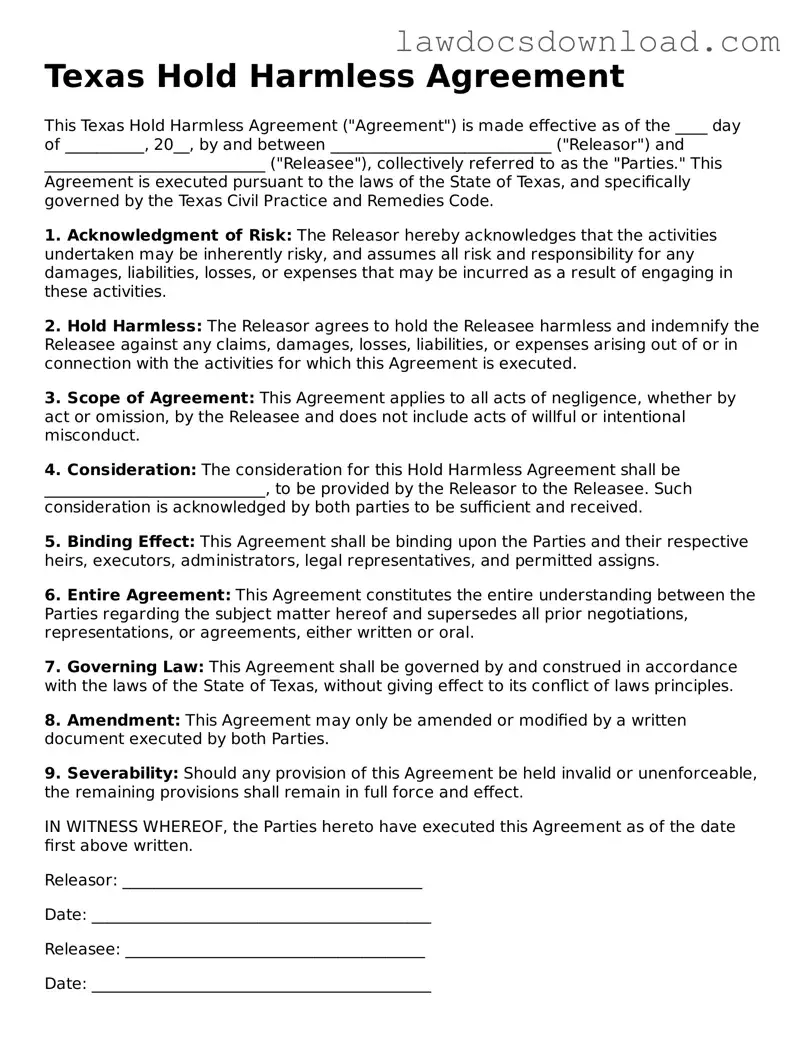Texas Hold Harmless Agreement
This Texas Hold Harmless Agreement ("Agreement") is made effective as of the ____ day of __________, 20__, by and between ____________________________ ("Releasor") and ____________________________ ("Releasee"), collectively referred to as the "Parties." This Agreement is executed pursuant to the laws of the State of Texas, and specifically governed by the Texas Civil Practice and Remedies Code.
1. Acknowledgment of Risk: The Releasor hereby acknowledges that the activities undertaken may be inherently risky, and assumes all risk and responsibility for any damages, liabilities, losses, or expenses that may be incurred as a result of engaging in these activities.
2. Hold Harmless: The Releasor agrees to hold the Releasee harmless and indemnify the Releasee against any claims, damages, losses, liabilities, or expenses arising out of or in connection with the activities for which this Agreement is executed.
3. Scope of Agreement: This Agreement applies to all acts of negligence, whether by act or omission, by the Releasee and does not include acts of willful or intentional misconduct.
4. Consideration: The consideration for this Hold Harmless Agreement shall be ____________________________, to be provided by the Releasor to the Releasee. Such consideration is acknowledged by both parties to be sufficient and received.
5. Binding Effect: This Agreement shall be binding upon the Parties and their respective heirs, executors, administrators, legal representatives, and permitted assigns.
6. Entire Agreement: This Agreement constitutes the entire understanding between the Parties regarding the subject matter hereof and supersedes all prior negotiations, representations, or agreements, either written or oral.
7. Governing Law: This Agreement shall be governed by and construed in accordance with the laws of the State of Texas, without giving effect to its conflict of laws principles.
8. Amendment: This Agreement may only be amended or modified by a written document executed by both Parties.
9. Severability: Should any provision of this Agreement be held invalid or unenforceable, the remaining provisions shall remain in full force and effect.
IN WITNESS WHEREOF, the Parties hereto have executed this Agreement as of the date first above written.
Releasor: ______________________________________
Date: ___________________________________________
Releasee: ______________________________________
Date: ___________________________________________
